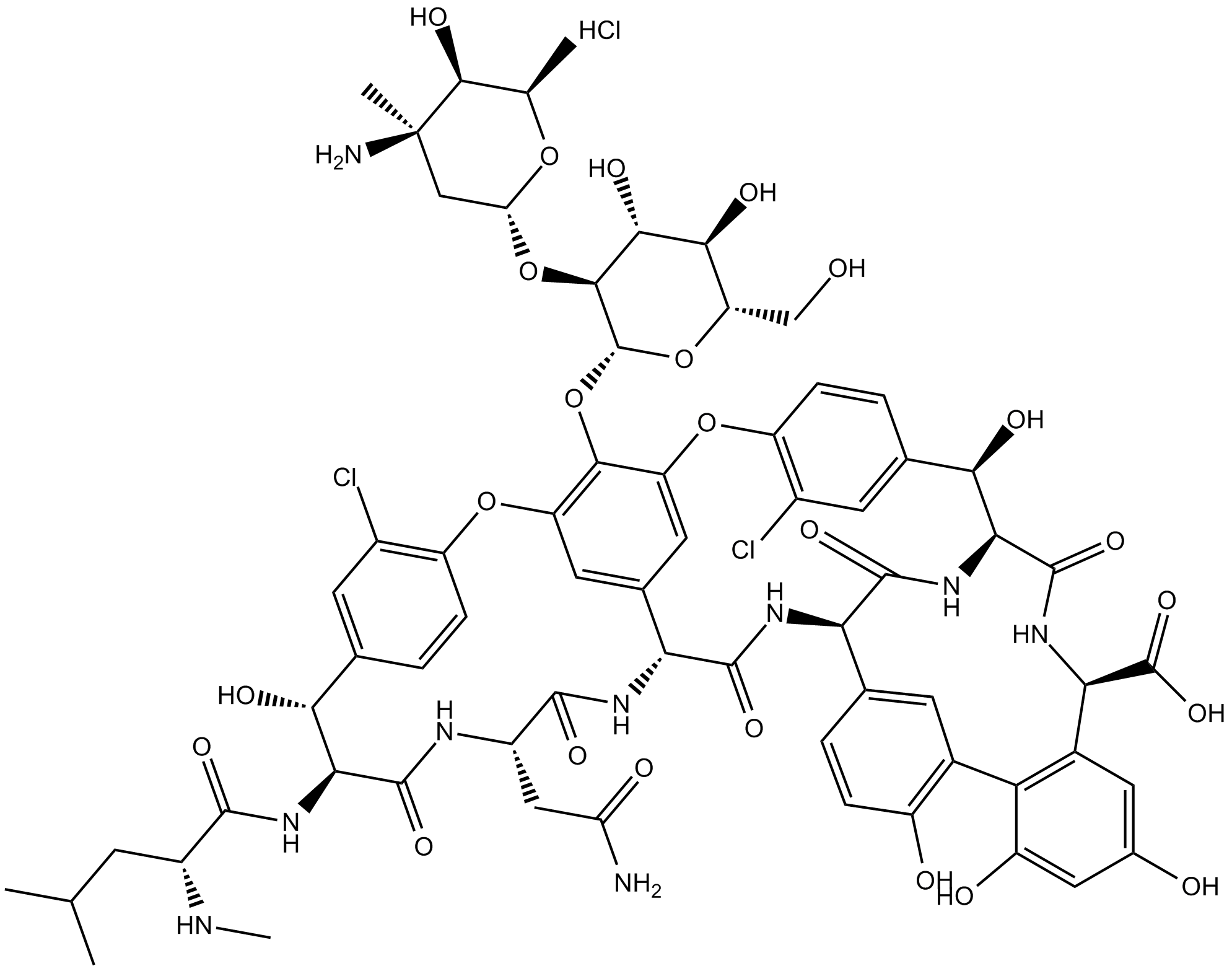Vancomycin hydrochloride (Synonyms: Lyphocin) |
| Catalog No.GC12993 |
반코마이신 염산염은 세균 감염 치료를 위한 항생제입니다.
Products are for research use only. Not for human use. We do not sell to patients.

Cas No.: 1404-93-9
Sample solution is provided at 25 µL, 10mM.
Vancomycin hydrochloride is an antibiotic for the treatment of bacterial infections. It acts by inhibiting the second stage of cell wall synthesis of susceptible bacteria. Vancomycin also alters the permeability of the cell membrane and selectively inhibits ribonucleic acid synthesis.
Vancomycin is a large glycopeptide compound with a molecular weight of 1450 Da[1]. Vancomycin is a unique glycopeptide structurally unrelated to any currently available antibiotic. It also has a unique mode of action inhibiting the second stage of cell wall synthesis of susceptible bacteria. Vancomycin is active against a large number of species of Gram-positive bacteria, such as Staphylococcus aureus, Staph. epidermidis, Str. agalactiae, Str. bovis, Str. mutans, viridans streptococci, enterococci[2].
Vancomycin is administered intravenously, with a standard infusion time of at least 1 h, to minimize infusion-related adverse effects. Subjects with normal creatinine clearance, vancomycin has an α-distribution phase of 30 min to 1 h and a β-elimination half-life of 6-12 h. The volume of distribution is 0.4–1 L/kg. The binding of vancomycin to protein ranges from 10% to 50%. Factors that affect the overall activity of vancomycin include its tissue distribution, inoculum size, and protein-binding effects[1]. Vancomycin treatment of infected mice is associated with improved clinical, diarrhea, and histopathology scores and survival during treatment[3].
References:
[1]. Rybak MJ, et al. The pharmacokinetic and pharmacodynamic properties of vancomycin. Clin Infect Dis. 2006 Jan 1;42 Suppl 1:S35-9.
[2]. Watanakunakorn C, et al. Mode of action and in-vitro activity of vancomycin. J Antimicrob Chemother. 1984 Dec;14 Suppl D:7-18.
[3]. Warren CA, et al. Vancomycin treatment's association with delayed intestinal tissue injury, clostridial overgrowth, and recurrence of Clostridium difficile infection in mice. Antimicrob Agents Chemother. 2013 Feb;57(2):689-96.
Average Rating: 5 (Based on Reviews and 17 reference(s) in Google Scholar.)
GLPBIO products are for RESEARCH USE ONLY. Please make sure your review or question is research based.
Required fields are marked with *




